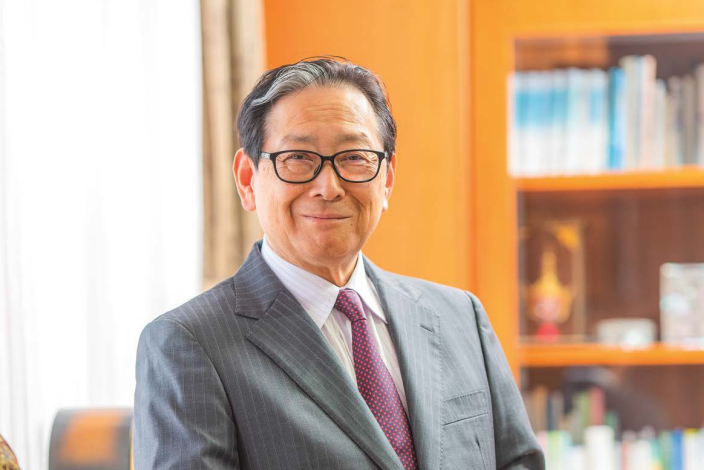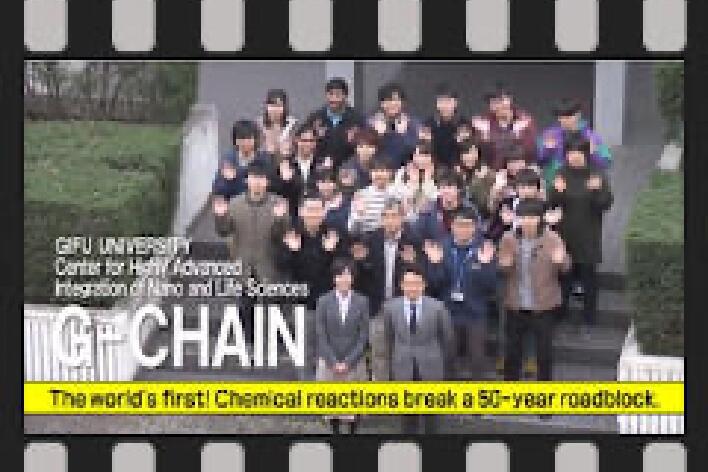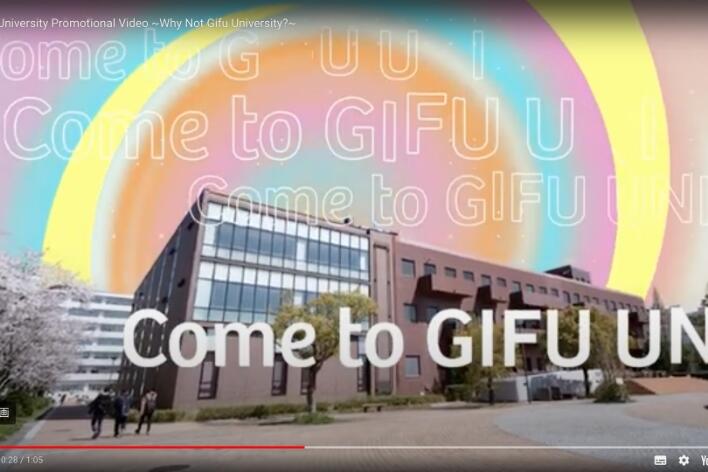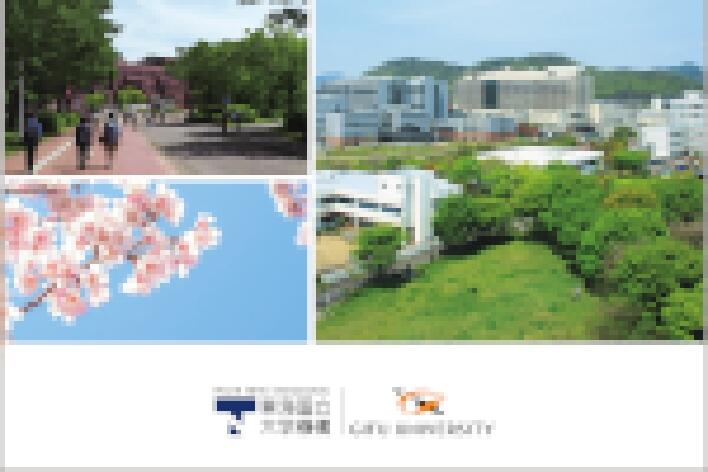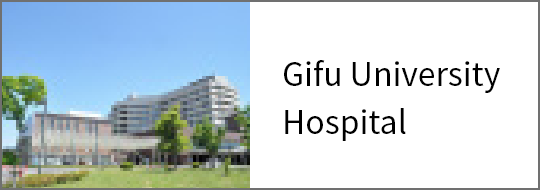Student-led Biodiversity Conservation and Nature Restoration Projects
*Information related to faculty members/students and graduate schools at Gifu University here are all that of the time of interviewing.
Banga-ike Pond is situated on the Gifu University campus. In the past, aquatic plants thrived, and numerous wild birds frequented the pond. However, after nearly half a century of neglect, the wetland-like environment has deteriorated, leading to a decline in biodiversity. We spoke with students who are deeply committed to environmental issues and actively working to restore this natural habitat.


In 1975, Gifu University's nature conservation efforts during the relocation of the Gifu University campus resulted in the designation of Banga-ike Pond (approximately 20,000 square meters) as a 'nature conservation site.' This pond serves as a habitat for valuable plants and animals, including dikkop (freshwater fish), and is renowned for the largest flyover site for ducks in Gifu City.
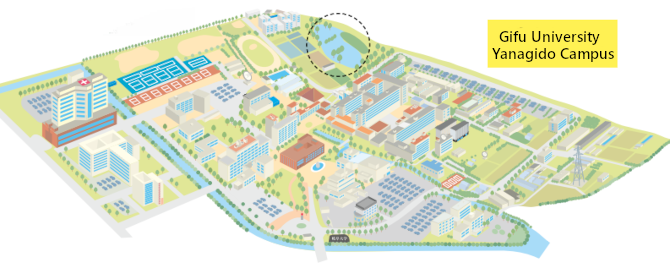


G-amet, established in 2018 by volunteers, aims to enhance environmental awareness through student-led initiatives focused on environmental issues. Their guiding philosophy is: 'We must do what we can do.' As of February 2024, the group comprises 18 members.
Banga-ike Pond Nature Restoration Projects aims to create an environment conducive to the return of waterfowl, including the iconic bans*1 to Banga-ike Pond on the Gifu University campus. As part of our G-amet activities, we have conducted surveys at the site for approximately four to five years, studying the mechanisms behind the degradation of the natural environment and biodiversity. Currently, we are analyzing survey results to develop effective restoration measures and implementing staged artificial restoration efforts.

research on the water quality of Banga-ike
Pond and the flora and fauna that inhabit
the area. As a student circle, our goal is to
engage in cross-disciplinary studies that
bridge the gap between the humanities and
sciences.
Banga-ike Pond Nature Restoration Projects began when the founding members of G-amet discovered the existence of the pond during a lecture and became aware of the challenges it faced. Historically, the areas surrounding the pond were wetlands and served as a breeding ground for waterfowl, including bans. However, in the 1970s, torrential rains and the relocation of the Gifu University campus significantly altered the ecological environment. Additionally, invasive species and water quality deterioration resulted in the disappearance of the bans. Consequently, the pond has been neglected for nearly half a century, and its recognition by students and faculty members has steadily declined over the years.
G-amet operates under the motto, 'We must do what we can do.' We firmly believe that restoring the pond is within our capabilities as students. Unlike working adults or corporations, we don't need to consider monetizing our efforts. Instead, we enjoy exploring topics related to plants, animals, and environmental issues during our relatively free time. Our circle fosters mutual inspiration among members, and we eagerly anticipate our regular weekly meetings.
 In this project, the Gifu University Yanagido Campus, including Banga-ike Pond, serves as a large-scale experimental site. Here, students and local residents can interact with diverse organisms, fostering the development of human resources equipped with knowledge for environmental conservation. We learn research methods and conservation measures based on scientific findings, accumulating knowledge and experience while enjoying the process. As the saying goes, 'Seeing is believing,' firsthand observation and interaction are crucial for understanding the environment. Therefore, we are committed to conserving biodiversity and safeguarding these research sites.
In this project, the Gifu University Yanagido Campus, including Banga-ike Pond, serves as a large-scale experimental site. Here, students and local residents can interact with diverse organisms, fostering the development of human resources equipped with knowledge for environmental conservation. We learn research methods and conservation measures based on scientific findings, accumulating knowledge and experience while enjoying the process. As the saying goes, 'Seeing is believing,' firsthand observation and interaction are crucial for understanding the environment. Therefore, we are committed to conserving biodiversity and safeguarding these research sites.
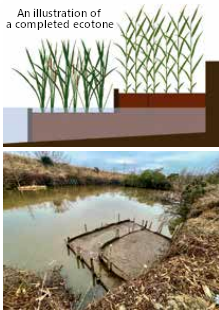
We have established a small experimental
area within Banga-ike Pond to test the
feasibility of regenerating an emergent plant
habitat by artificially creating an ecotone.
Furthermore, we emphasize the importance of collaborating with individuals both within and outside the university for the project. Recognizing our limited perspectives and expertise, we actively seek cooperation with experts. By doing so, we can broaden the community of individuals interested in Banga-ike Pond, engaging people from diverse backgrounds. To achieve this end, we share our activities and disseminate information through social networking sites and websites. Gradually, we are gaining recognition from individuals on campus and at other universities. We remain committed to actively promoting our G-amet initiatives.
Since last year, we have been establishing ecotones. An ecotone is a transitional zone between land and water areas along a waterfront. Biodiversity flourishes in locations where water depth and soil moisture conditions gently shift. Unfortunately, many natural ecotones have disappeared. However, by creating artificial transition zones, we can potentially establish new lakes and wetland ecosystems. If emergent plants take root at the bottom of the water and provid a habitat for waterfowl, these areas will become comfortable living spaces for them. We would like to continue our ecotone project on a incremental, step-by-step basis.
